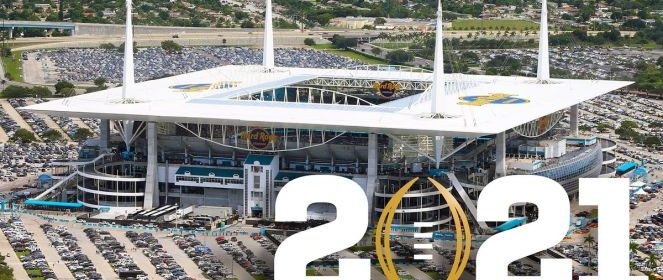2020 College Football COVID-19 Rule Adjustments

Posted by Ryan Wright
Twitter: @RyanWrightRNG
The following are newly released rule changes for the 2020 college football season addressing COVID-19 and safety for the players and coaches by the National Football Foundation (NFF), College Hall of Fame, and College Football Officiating (CFO).
2020 Rules Adjustments to COVID-19
Team Area and Coaching Box
To promote enhanced social distancing, the Team Area will be lengthened from the current configuration between the 25-yard lines and expanded to the 15-yard lines. This will enlarge the Team Area an additional 10 yards on each end of the field, resulting in a 70-yard-wide total team area. Coaches will be encouraged to utilize this 70-yard area to separate all team personnel and not have large groups congregating in a specific area near the ball. In addition, based on social distancing guidelines, Coaches are encouraged to stay out of the Restricted Area and remain in the Coaching Box.
Pregame Toss
Currently the toss rules allow up to four Captains from each team to be present at the toss of the coin. Additionally, there are typically many additional non-essential people present such as honorary captains, media, photographers, sideline radio personnel, etc. The change for 2020 would be to include only one Captain from each team and the Referee and the Umpire. These four individuals are the only essential people that can attend the toss, and these four individuals will be spaced out and will conform to social distancing guidelines.
Uniform Attachment / Medical Mask
A medical mask made of cloth attached to the face-mask below the eye shield area will now be allowed. If worn by any squad member of a team, medical masks must be of the same color and design and must be of a solid color with no advertising, slogans, or insignia. The medical mask may bear the team logo.
Playing Rules Changes Related to Commemorative/Memorial Uniform Patches
In an effort to allow student-athletes the opportunity to use the uniform to voice their opinions and/or express support of racial and social justice, PROP voted to direct all playing rules committees to implement the following policies for all sports effective with the 2020-21 seasons:
- As authorized by the institution or conference, allow a commemorative/memorial patch (e.g., names, mascots, nicknames, logos, and marks intended to celebrate or memorialize persons, events, or other causes).
- The patch must not exceed 2¼-square inches and must be placed on the front or sleeve of the uniform and may not interfere with any required markings.
- While not all team members are required to wear the patch, the patch must be identical for those who choose to wear the patch.
- As authorized by the institution or conference, allow other names/words intended to celebrate or memorialize persons, events, or other causes on the back of the jersey/uniform where the player name is traditionally located. The names/words may vary by team member.
2020 Officiating Protocols
In response to mitigate the spread of COVID-19, the following officiating protocols will be in place:
- The traditional whistle will not be allowed based on health concerns. Each official will now use an electronic whistle, and it is recommended that this whistle be attached at the waist.
- All officials will wear a solid black mask. The official will “mask up” when the snap is imminent and may only lower the mask between plays when the official is in space (i.e. social distancing). The official may lower their mask and replenish oxygen but must mask up if anyone approaches the official or the next snap is imminent.
- Protective eye-wear and gloves are recommended but is an optional decision that each official can make based on their personal circumstances.
- All officials will be tested for COVID-19 weekly and will follow all Conference protocols.
- Officials will conduct their Friday night film session and Pregame meetings virtually even when they are together in a specific hotel.
- All conference coordinators are reworking crew and game assignments to minimize public transportation.
